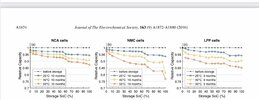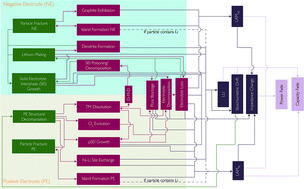Let's say your car has some amount of battery degradation and you can't get the range you want.
You were told to calibrate battery and you may get some range back.
Here is the thing...
It doesn't matter and don't worry about it.
The fact is that the actual amount of battery capacity is there (minus the battery degradation) regardless of what the car shows as estimated range. Either the top end reading is incorrect or the button end reading. Your car will still drive even if it's at 0% (not recommended) just because the reading is incorrect, it doesn't mean that the actual battery capacity is not there.
In my opinion, battery calibration is kind of useless because:
1. It doesn't effect your actual range
2. You can't show it as evidence to claim it for replacement under warranty because it is not enough lose.
3. Charge from 5% to 100% (or whatever you way of calibration is) and repeating it only further wears out the battery.
4. Even after a successful calibration, the gain in displayed range is not much and it wouldn't made a difference anyway because the displayed range is an estimate after all.
There is no need to worry about if you can get the car to show you 15 or 20 or 30 miles on the display. It's the same battery whether it shows 20 miles more or less. That's why there are a lot of super chargers around.
The BMS knows how to balance the cells and get the best energy out of them.
Just drive your car, enjoy it and take good care of it.
Don't let it go down to 0% and don't keep it at 100%. That's it.
You were told to calibrate battery and you may get some range back.
Here is the thing...
It doesn't matter and don't worry about it.
The fact is that the actual amount of battery capacity is there (minus the battery degradation) regardless of what the car shows as estimated range. Either the top end reading is incorrect or the button end reading. Your car will still drive even if it's at 0% (not recommended) just because the reading is incorrect, it doesn't mean that the actual battery capacity is not there.
In my opinion, battery calibration is kind of useless because:
1. It doesn't effect your actual range
2. You can't show it as evidence to claim it for replacement under warranty because it is not enough lose.
3. Charge from 5% to 100% (or whatever you way of calibration is) and repeating it only further wears out the battery.
4. Even after a successful calibration, the gain in displayed range is not much and it wouldn't made a difference anyway because the displayed range is an estimate after all.
There is no need to worry about if you can get the car to show you 15 or 20 or 30 miles on the display. It's the same battery whether it shows 20 miles more or less. That's why there are a lot of super chargers around.
The BMS knows how to balance the cells and get the best energy out of them.
Just drive your car, enjoy it and take good care of it.
Don't let it go down to 0% and don't keep it at 100%. That's it.




